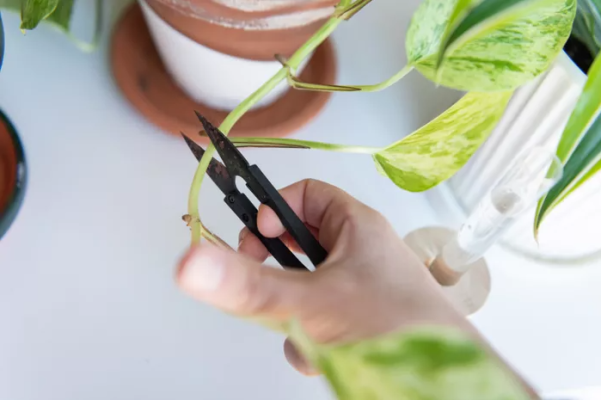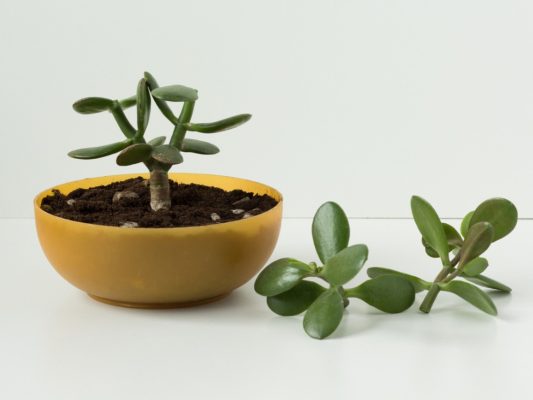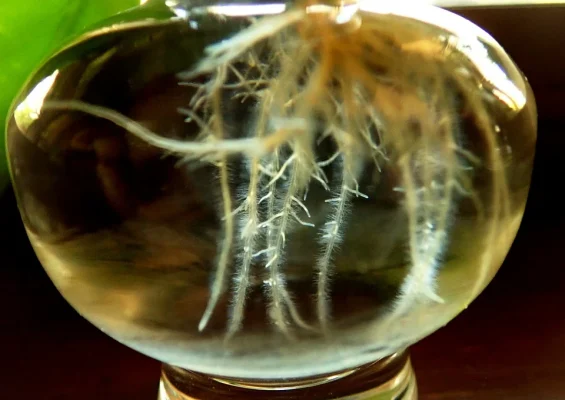The Garden Post
Introduction to Propagating Plants
Propagation is the process of starting a new plant from a main, parent plant and most commonly used for plants that do not easily grow from or produce seeds. It can be done for both indoor and outdoor plants, though houseplants are more commonly propagated.
Recommended Tools
- Sharp, clean pruners or knife
- Gloves
- A clear vase or jar per cutting
- Potting Soil (All-Purpose is the best choice for most cuttings, but if you are propagating plants that prefers a specialty soil, make sure you use that soil)
- Appropriately sized containers (no more than 1-2” larger than the root system of the plant)
- Rooting Hormone (optional)
Propagation Techniques
Stem Cutting/Leaf Cutting
One of the easiest and most common methods of propagation. Simply cut the stem of your plant just below a leaf or a node. Nodes are small brown bumps located below leaves that are the beginning of aerial roots. If placed in water, these nodes will develop into new roots. Some plants do not require a node/aerial root for propagation, others (like philodendrons) can only be propagated through this method.
Once the cut has been made, place the cutting into a clear vase, cup or jar and fill with water. Set your cuttings in an area with lots of bright, indirect light. Make sure to replace the water every 4-5 days. Once your cutting has developed roots that are 3-4” long, it’s time to transplant them into soil. Use either a well-draining, all-purpose soil like Espoma Potting Soil or a specialty soil if required. After you have planted your cuttings, you can begin normal care for the plant you are rooting.
Instead of clear containers, you can also use paper towels to encourage root development. Simply lay your cutting down so that the cut portion (and any nodes) is in the center of the paper towel. Fold over so the cut end is covered and mist the paper towel until it is damp. Keep the paper towel damp, but not soaking wet, until 3-4” roots develop and then the cutting may be planted.
Cuttings can be planted directly into soil after being cut, but will do best if the cut is dipped into rooting powder before planting. Rooting powder contains hormones that encourage root development,
Division/Splitting:
Dividing or splitting a plant is useful for more than just propagation. Dividing a plant is an easy way to reduce the overall size of plant that has grown too large for its pot or location.
The plant that is to be divided should be thoroughly watered a couple of days prior to division. Soil that is moist, but not soaking wet, is easiest to work with. Dry soil and roots can cause quite the mess during division and may cause damage to the root system through tearing and breakage.
Remove the plant to be divided from the pot. Remove as much of the soil as you can from around the roots and untangle the roots if the plant is overly pot-bound. Depending on the plant, you may be able to simply pry the plant apart into different segments. If cutting is needed, use a sawing motion with a sharp knife and saw the root system in half. If your plant is large enough, you can divide the halves into quarters. Keep as many roots as you can per segment.
Pot your divided plants into new containers with new soil. Regular care for the plant you have divided can begin immediately.
Plants that have been divided can go through a period of stress afterwards, which may include leaf drop and yellowing of leaves. Use of a root stimulant, like Fertilome Root Stimulant, can help your plants recover faster.
Not all plants can be propagated by division. Some plants, like Parlor Palms, have extremely delicate root systems and do not do well when divided. Other plants, like Dragon Tree or Ponytail palms, grow from a singular trunk that cannot be split.
Pups
Some plants make propagation an incredibly simple process. Spider Plants, Haworthia, Snake Plants and some varieties of Aloe, among others, produce what are known as ‘pups.’ These pups are essentially new plants that have started growing off of the parent plant’s root system. Propagating them is as easy as cutting the pup off of the parent plant once the pup has enough of a root system to support itself (usually 1-2” long). Pups can be planted directly into soil after being divided and watered as normal.
Succulents
Succulents are one of the easiest types of plants to propagate. There are two main methods for succulent propagation.
Stem Cutting
Choose a sturdy branch and cut it off the main stalk as closely as possible with a sharp pair of pruners or knife. After cutting the stem, remove any leaves within an inch of the cut. Allow the piece sit out for several days to allow the cut end to dry out. Once dry, plant the cutting directly into soil. You can dip the cutting into rooting powder before planting to encourage root development.
Leaf Cutting
Using this method, you can grow an entirely new succulent from a single leaf. Use a leaf you cut off with sharp pruners or one that has fallen off on its own. Allow the leaf to sit out for a few days until the cut is dry. Once dry, lay the leaf on top of a container of potting soil. Keep the soil moist (but not soaking wet) and provide lots of bright light. Within a few weeks roots and tiny plants will begin to grow from the base of cuttings. Allow their root systems to mature, then replant as desired.
Unlike mature succulents, cuttings will need regular moisture until they can grow roots. Water frequently enough to keep the soil from drying out, but not so often that you see standing water.
Additional Tips
No matter what method you are using, tools should be cleaned and sanitized with rubbing alcohol before, during and after each propagation. If you are making multiple cuts and especially if you working with more than one plant, make sure to clean your tools between each cut and each plant. If by chance a plant has any diseases within it, you do not want to potentially transfer them to your other plants.








